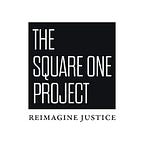Our country’s social contract and its relationship with the criminal justice system
By Bruce Western
People in the United States should expect a range of political and social rights to help them navigate daily life, global crises, and everything in between. Yet the unalienable rights to “life, liberty, and the pursuit of happiness” have never been guaranteed for all and the failed criminal justice “system” has been an oft-used tool to ensure that the social contract is not fulfilled for all, contributing to poverty and undermining opportunity.
At the second session of the Square One Roundtable on the Future of Justice Policy in mid-August, our participants dove into the history of our country’s social contract and its relationship with the criminal justice system and compared our social agreement to other wealthy countries where penal control doesn’t rest at the heart of social policies. Bruce Western, Square One’s Co-Founder and Bryce Professor of Sociology and Social Justice at Columbia University provided summary thoughts at the end of the Roundtable session following a discussion among Roundtable participants of the day’s themes. We’ve collected them and offer them below.
— —
COMMENTS OF BRUCE WESTERN, COLUMBIA UNIVERSITY, AUGUST 19, 2020
Like [Roundtable participant] Aisha McWeay, I was thinking about the two papers, asking which is the cart and which is the horse? Elizabeth Hinton examined community empowerment, and David Garland discussed the importance of fundamental structural change to the political economy. At the most abstract level, the discussion revolved around the mutual relationship between democracy and justice.
There were three big themes I took from the discussion:
1. Power
Elizabeth’s paper can be read as an account of community empowerment. The principle of “maximum feasible participation” that infused the Great Society initiatives had the potential to give communities voice in addressing poverty and related social problems. Communities gained power, briefly, through the initiatives in the 1960s that directly transferred federal funds to community organizations.
The discussion in many ways explored the nature of community power. The example of the War on Poverty indicates the importance of money and organization. Community members also have the power of lived experience (“those closest to the problem, are closest to the solution,” from Marcia Rincon-Gallardo). Aswad Thomas observed how victims of crime, in a similar way, are empowered by their lived experience and their symbolic standing in the political culture.
I heard Courtney Robinson and Marcia argue that history exerts massive power. Our current institutions are the residue of past exploitation, repression, and struggle. We carry history around with us today in how the system operates, and how we challenge it. Transformational change will involve confronting history in some way.
So money, organization, lived experience, symbolic standing, and our relationship to history are key power resources, all of which are important for the underdogs who have been excluded from the corridors of wealth and influence.
2. Communities
Communities were both the key site of political power for Elizabeth, and the stage on which the American system of penal control operates for David. What are communities? Communities are not state agencies, or municipal governments. As I heard the discussion, communities are local residents living in dense networks of social life, having some shared sense of belonging to a place or shared community.
Communities are complex, and a policy and political project centered on community power must take account of the complexity. A number of people spoke to the capacity of communities for creativity, innovation, particularly to develop local solutions (Chas Moore, Fatimah Loren Dreier, Linda Zeller, and Vesla Weaver).
But communities struggle with their own inequalities and systems of power (Gabriel Salguero, David Garland), and projects of community empowerment risk reproducing those inequalities. So representation should be inclusive (Kristian Caballero). Communities in some cases have also suffered great harm, those we look to for leadership may themselves be contending with trauma (Fatimah).
Putting the discussion of Power together with the Communities discussion suggests we need a Community Action Plan 2.0, in which government plays a role in helping to develop community capacity in a context in which the deep inequalities that David described has left localities without some of the internal resources they need to fully achieve their own goals.
3. Transformational Change
The fundamental change that community empowerment might achieve was clearly described by David as a different type of political economy that had a robust type of social citizenship guaranteed through a generous web of social policy. Mass incarceration, the American project of penal control, has no role in such a policy regime. Transformational change, in this context, is partly a change of ideology, in which ideas about who is deserving, who is human, who is treated with dignity, is greatly expanded (Jorge Renaud). Partly too, it’s a change of institutions in which people are supported in ways fundamental to their well-being (through healthcare, housing, and education, for example) unconditionally, simply by virtue of being community members.
An implication here is that US social policy institutions, particularly perhaps for health care and housing, are grossly inadequate for a reimagined justice (Kimá Joy Taylor). It is hard, for example, to re-imagine justice as public health if healthcare is not universal.
As Aisha said, in this vision, justice reform is about economic justice.
